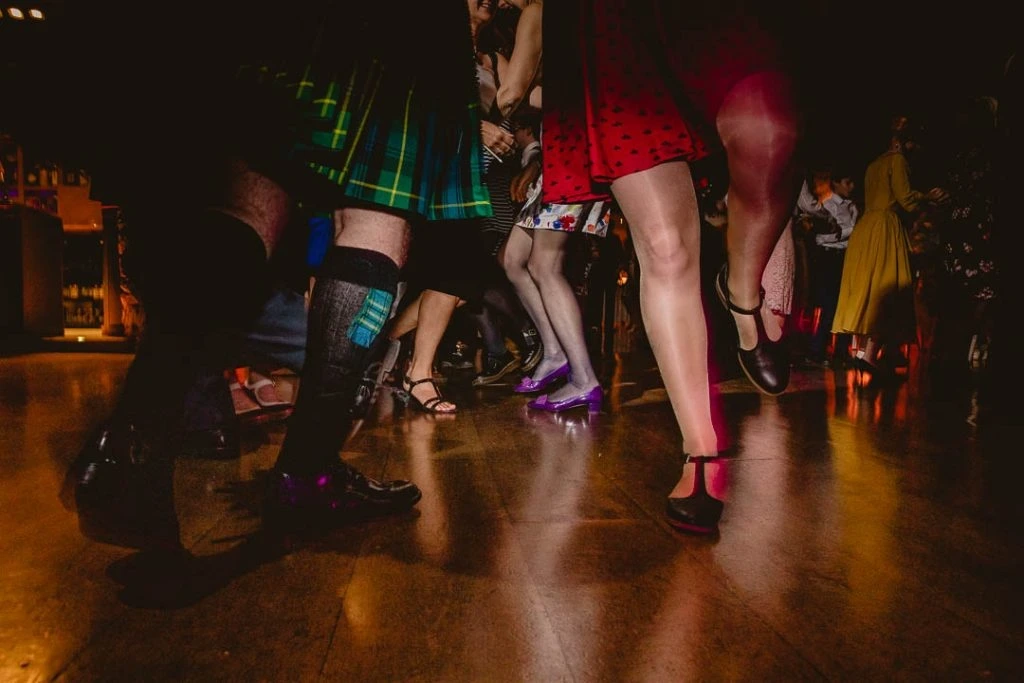10 Things You Didn’t Know About Robert Burns (and Why He’d Have Loved a Ceilidh)
October 29, 2025

1. Burns Was the Original Party Starter
Robert Burns wasn’t just a poet — he was a social force. His gatherings weren’t genteel readings by candlelight; they were raucous nights filled with whisky, singing, and dancing. Burns Nights as we know them grew directly from that spirit. A ceilidh would have been right up his alley: laughter, music, and a sense of everyone joining in, regardless of class or confidence.
Burns’s friends often described him as the life of any gathering, and he never missed an opportunity to toast, dance, or debate. A ceilidh is exactly that same celebration of warmth and inclusion — structured chaos that Burns would have found irresistible.
2. He Wrote “Auld Lang Syne” as a Kind of Ceilidh Anthem
It’s sung at New Year’s Eve across the world, but “Auld Lang Syne” was originally written as a nostalgic drinking song — something to be sung arm in arm at the end of a night. The tune and the message (“should old acquaintance be forgot…”) perfectly capture what ceilidhs are about: friendship, shared memories, and maybe one last spin before closing time.
When you belt it out at the end of a ceilidh, you’re not just closing the night. You’re continuing one of Burns’s oldest traditions — uniting people through music.
3. His Work Was Made to Be Danced To
Burns wrote many of his poems with rhythm in mind. The lyrical pulse of pieces like “Tam O’Shanter” or “Whistle o’er the Lave o’t” practically begs to be set to music. He drew heavily from Scottish folk tunes, so much so that his verses often slip seamlessly into jigs and reels.
The energy of a ceilidh matches that natural musicality — you can almost imagine “Tam O’Shanter” being shouted over a fiddle tune while dancers whirl past in a blur of tartan.
4. The First Burns Supper Was Basically a Ceilidh
The very first Burns Supper took place in 1801, just five years after his death. It wasn’t a stiff formal dinner. It was a boozy night in a farmhouse kitchen — haggis, whisky, laughter, music, and poetry. Guests read Burns’s verses aloud between toasts and songs, and the mix of spontaneity and warmth set the tone for every Burns celebration since.
If you added a fiddle and a caller, it would have been a ceilidh in all but name.
5. He Was a Rebel Against Boring Gatherings
Burns hated pretense. He wrote fiercely about equality and friendship, which is why his celebrations were never exclusive affairs. Everyone was welcome, from farmers to lords, and everyone took part.
That’s exactly what makes ceilidhs so timeless. They reject the idea that music is something to sit and watch — it’s something to join in with. Burns would have approved of that ethos completely.
6. He Collected Folk Tunes — and Improved Them
Burns wasn’t just a writer; he was also a music editor. He collected over 300 traditional Scottish songs for publications like The Scots Musical Museum. But he didn’t just record them — he rewrote and improved the lyrics to make them more poetic, often adding new verses of his own.
In doing so, he preserved the living tradition of Scottish music — the very same tunes that underpin modern ceilidhs. When you dance to “The Dashing White Sergeant” or “The Gay Gordons,” you’re moving to melodies that Burns helped keep alive.
7. The “Address to a Haggis” Was a Performance Piece
It’s easy to think of the Address to a Haggis as something people solemnly recite at Burns Suppers, but it’s actually meant to be funny and theatrical. Burns wrote it as a tongue-in-cheek celebration of Scottish pride, full of exaggerated language and rhythm.
If you’ve ever seen it performed properly — with plenty of flourish and laughter — you’ll recognise the same energy that drives a ceilidh. It’s not about perfection; it’s about passion and fun.
8. Burns Night is the Perfect Warm-Up to Ceilidh Season
Once Halloween and Christmas are over, Burns Night lands in that quiet stretch of winter when people crave something to look forward to. A ceilidh fills that gap perfectly: warm lights, live music, a drink in hand, and a reason to dance in the middle of January.
For many, Burns Night marks the start of ceilidh season. After the winter lull, it’s a reminder that connection and celebration never go out of season.
9. Ceilidhs Keep Burns’s Legacy Alive Better Than Any Statue
There are more statues of Robert Burns than any other non-religious figure in the world — but none of them capture his true spirit. Burns wasn’t about being admired; he was about being understood and enjoyed.
When people gather for a ceilidh, they embody his philosophy: life’s better when you join in. The shared rhythm, the laughter when someone goes the wrong way, the sound of fiddles cutting through the noise — that’s Burns’s world brought to life.
It’s not commemoration through marble, but through movement.
10. He’d Have Been the First on the Dance Floor
Burns was known for his confidence, wit, and charm. He loved company, flirtation, and a good story — all the essential traits of a great ceilidh guest. You can picture him leading a reel with a glass of whisky in one hand and a rhyme on his tongue.
He’d have been spinning partners left and right, laughing too loudly, and probably writing a few verses about the night before dawn broke.
The Ceilidh Connection
A Burns Night ceilidh isn’t just an event — it’s a living tribute to everything Robert Burns stood for. Joy, inclusivity, storytelling, and the belief that life’s best moments happen when people come together.
From the toast to the haggis to the final spin of “Strip the Willow,” it’s a celebration that connects us not just to Scotland’s past, but to the shared human need for rhythm, laughter, and community.
Burns wrote, “The heart aye’s the part aye that makes us right or wrang.” In other words, what matters most isn’t formality or precision — it’s sincerity. And that’s exactly what every ceilidh delivers.
Final Thoughts
As the year winds down and Christmas decorations fade, Burns Night steps in like a beacon of warmth in the cold. It’s the ultimate “reset” celebration — a reminder to gather, laugh, and dance just for the joy of it.
Burns’s songs may be over two centuries old, but their spirit lives on in every ceilidh tune, every raised glass, and every chaotic spin across the dance floor.
If he were here today, there’s no question where you’d find him on 25 January: not in a museum or a parlour — but right in the middle of the ceilidh, laughing harder than anyone else.
